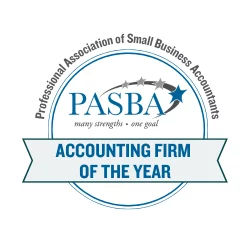Choosing the right business structure is essential for any company as it lays the foundation for its operations and management. The two most commonly used corporate structures are S corporation (S corp) and C corporation (C corp). While both offer limited liability protection to shareholders, they have several differences in terms of taxation, ownership requirements, and operational aspects. The following explores the differences between S corp and C corp, providing a deeper understanding of each structure to help you make an informed decision for your business.
What Is A C Corporation?
C corporation or C corp is the default corporate structure for large companies. A C corp is a legal entity that is considered separate from its owners (known as shareholders). This means that shareholders are protected by limited liability for the company’s debts and losses.
Advantages of C Corporations
- Protection of personal assets: Shareholders’ personal assets are protected from many legal actions against the corporation.
- Ability to raise capital: Unlike other business structures, C corps can issue stocks and attract investors, making raising capital for expansion or growth easier.
- Unlimited shareholders: A C corp can have unlimited shareholders, making it easier to distribute ownership and attract investors.
- Corporate tax deductions: C corps can deduct certain expenses from their corporate taxes, such as employee benefits, healthcare plans, and business equipment.
Disadvantages of C Corporations
- Double taxation: One of the most significant downsides of C corp is double taxation, where both the corporation and its shareholders are taxed on profits. Basically, not only does the corporation pay taxes on its income, but the shareholders must also pay taxes on their dividends.
- Complexity and cost: C corps require more paperwork, annual reports, and regular meetings, making them more complex and expensive to maintain than other structures.
- More government regulations: If it is a larger corporation, a C corp is subject to more government regulations and compliance requirements, adding further complexity and costs.
What Is An S Corporation?
The key difference between an S Corp and a C Corp is that it has elected to be taxed differently under Subchapter S of the Internal Revenue Code (which is why it’s called an “S corp”). This structure offers the benefits of limited liability protection without the double taxation of C corps.
Advantages of S Corporations
- Pass-through taxation: Unlike C corps, S corps do not have to pay corporate taxes at the federal level because the company’s profits and losses pass through to shareholders’ personal tax returns.
- Limited liability protection: Shareholders are protected from many legal actions against the corporation, similar to C corps.
- Tax benefits for owners: Owners can receive tax-free distributions and may also deduct business losses on their personal taxes.
- Simplified compliance requirements: Compared to C corps, S corps have less paperwork and compliance requirements, making them easier and cheaper to maintain.
Disadvantages of S Corporations
- Ownership restrictions: S corps have strict ownership restrictions, including a limit of a hundred shareholders. Shareholders must also be US citizens or permanent residents.
- Limited ability to raise capital: S corps cannot issue stocks and is limited to obtaining funds through loans or investments from shareholders.
- Limited growth potential: Due to the ownership restrictions, it may be challenging for S corps to attract investors and grow beyond a certain size.
Ownership Differences Between S Corp & C Corp
Although both S corps and C corps have shareholders, their ownership structures differ significantly. Some of the key differences include:
Shareholder Restrictions
As mentioned, S corps have stringent restrictions on the number of shareholders and their eligibility. They cannot have more than 100 shareholders, and all of them must be US citizens or permanent residents. C corps, on the other hand, can have an unlimited number of shareholders, including foreign individuals and entities.
Ownership Flexibility
S corps have a single class of stock, meaning all shareholders have equal rights and privileges. C corps can issue different classes of stocks with varying rights and privileges, giving them more flexibility in ownership. It means that C corps can offer different classes of stock with varying voting rights, dividend preferences, and other benefits to attract investors and raise capital, whereas S corps cannot. As such, C corps are more suitable for larger businesses planning to go public or attract outside investors.
Management & Liability Protection Differences
Both S corps and C corps offer limited liability protection, meaning that shareholders’ personal assets are protected from many legal actions against the corporation. However, their management structures differ.
Management Structure
S corporations have a simpler management structure compared to C corporations. In an S corp, shareholders can also be involved in the day-to-day operations of the business. For example, shareholders can serve as directors, officers, and employees. In a C corp, there is a clear separation between the owners (shareholders) and management (directors and officers). Shareholders elect the board of directors who oversee the corporation’s operations, while officers are responsible for managing day-to-day activities.
Liability Protection
Both S corps and C corps offer limited liability protection to shareholders. However, there may be some differences in how this protection is applied. In an S corp, the IRS can still hold shareholders liable for unpaid payroll taxes or other liabilities if they are found to have acted fraudulently or illegally. In a C corp, shareholders are generally protected from personal liability, except in cases of unethical or illegal behavior.
Do These Business Structures Have Different Taxation Policies?
Taxation is an essential aspect of any business structure as it directly impacts the bottom line and financial strategies. Both S corps and C corps have different taxation policies that can significantly affect how the company’s profits and losses are taxed.
How Are S Corporations Taxed?
S corps are taxed as pass-through entities. This means that profits and losses are passed through to shareholders’ personal tax returns. As a result, the company itself does not pay taxes on its income. Instead, each shareholder reports their share of the corporation’s profits or losses on their individual tax return.
How Are C Corporations Taxed?
C corps are taxed as separate entities. This means that they must pay taxes on their income at the corporate level. Shareholders are also required to pay taxes on any dividends received from the corporation, resulting in double taxation. Double taxation occurs when corporate profits are taxed at both the corporate level and again when they are distributed to shareholders as dividends.
Factors To Consider When Choosing Between C Corp & S Corp
When deciding between a C corp and an S corp, business owners must consider various factors to determine which structure suits their company’s needs. These factors may include:
Future Growth Plans
Business owners should consider their company’s growth potential and future plans when choosing between an S corp and a C corp. As discussed earlier, S corps have ownership restrictions that may limit their ability to raise capital and/or attract investors for expansion. Therefore, if a business has aggressive growth plans or intends to go public in the future, a C corp structure may be more suitable.
Fringe Benefits
C corps have more freedom in providing fringe benefits (for example, healthcare and retirement plans) to employees and shareholders. In contrast, S corps have stricter rules regarding these benefits. For example, in an S corp, only employees who own less than 2% of the company’s stock can receive certain tax-free fringe benefits. Additionally, C corps can deduct these benefits as business expenses, reducing their taxable income.
Business owners should consider which structure allows them to offer the best perks to attract top talent and retain employees.
Foreign Income
C corps offer more flexibility for foreign ownership and receiving income from overseas operations. In contrast, S corps have stricter rules limiting foreign shareholders’ eligibility and receiving international income. This is because S corps must maintain their status as domestic corporations to avoid losing their S corp tax benefits.
Therefore, a C corp structure may be more suitable if a business has international expansion plans or intends to have foreign investors.
Choose The Optimal Business Structure For Your Enterprise
Selecting the right business structure for your enterprise is a vital decision that can significantly affect its growth, operations, and financial success. Both C corps and S corps have their unique advantages and disadvantages, as discussed above.
Before making a decision, it is essential to consider the size of your business, future growth plans, tax implications, and ownership structure. Consulting with a financial advisor or a lawyer can also help you make an informed decision based on your specific business needs.
At J.R. Martin & Associates, we offer financial guidance and support to help businesses choose the optimal business structure for their operations. Contact us today for more information about our services and how we can assist you in making the right decision for your enterprise.
Ensure a prosperous future by making the appropriate choice. Explore how our advisory services can guide you when selecting entities.



